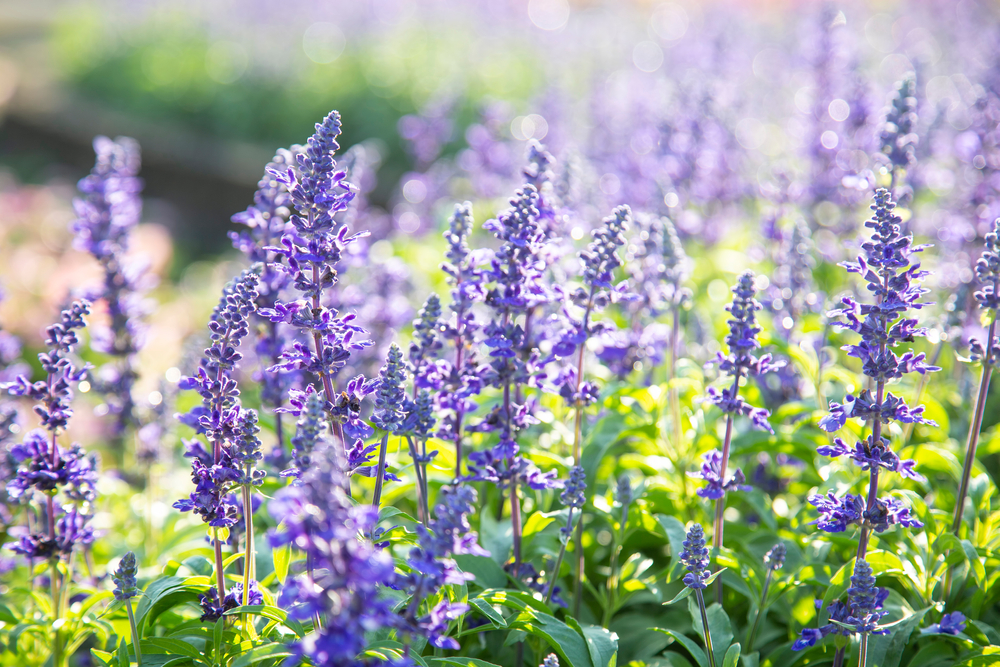Sage (lat. Salvia officinalis) is one of the most famous medicinal plants and due to its properties, it is included in many pharmaceutical and cosmetic products. Helps with sore throat or excessive sweating. You can find out what sage is still used for in our article.
Sage – traditional medicine
Sage, the Latin name for Salvia officinalis, is a medicinal plant in the Lamiaceae family, related to rosemary, basil, thyme, and oregano. He comes from the Mediterranean Sea, but he feels great in our environment. The very attractive, highly aromatic herb has a semi-smoky appearance, reaching a height of 70 cm. Its characteristic features are silvery-green felt leaves and an earthy aroma.
Sage blooms from May to July. It has a straight stem and most often purple flowers – a rich source for bees. Fruits are hard (a type of rotting fruit, usually consisting of four dry fry). When growing in a herb garden, give the sage enough space, it grows very easily and quickly. Loves sunny and dry places.
Sage has been used as a medicinal plant since ancient times. Since that time, he also bore the surname Salvia after the Latin “salvare”, that is, to preserve or heal. The ancient proverb of the queen of herbs, as it is often called sage, clearly testifies to its attitude for many centuries. “How can a person who has a garden grow up to be a sage? ”
What it contains and how it works
The leaves (Folium salviae) and stems (Herba salviae) are harvested, dried and treated as herbal medicine. Sage tincture (Salviae tinctura) is also a pharmacological drug. Sage processed in this way contains a wide range of active natural substances. First of all, these are essential oils of thujone, camphor, cineole or borneol. Among other substances, sage is rich in bitterness, tannins, triterpenes or flavonoids. The content of phenolic acids (rose acid, caffeic acid, chlorogenic acid and feluric acid) is important for the strong antioxidant effect of sage.
How to harvest and dry sage properly
If sage grows in your garden, certain rules must be followed when harvesting in order to preserve all the important properties of this versatile plant. The leaves are harvested shortly before the sage blooms. They must be completely dry or the sage will turn brown, so it is recommended to harvest the leaves and stems at noon. Dry in thin layers in the shade. The dried stem should be green to silvery gray, if it turns brown when dry, do not reuse it.
Sage and its uses in health care
Sage has anti-inflammatory, bactericidal and fungicidal properties. It also has a diuretic, antispasmodic, expectorant and antioxidant effect. Tannins are responsible for its astringent action. Sage medicinal tea can be taken internally or externally. It is drunk for indigestion, heartburn and bloating. Sage tea is also drunk to relieve excessive sweating, a property especially appreciated by women in transition. Breastfeeding mothers should be aware that sage reduces breast milk production. Topically, sage decoction is used as a gargle for inflammation of the oral cavity, gum problems, bad breath or after surgery in the oral cavity, including teeth. Sage tea can also be used to dress skin wounds. The shredded fresh leaf soothes and disinfects the skin after an insect bite.
The astringent effect of sage can be used externally (massage solutions for gum disease, lotions for oily skin) and internally (for example, to relieve diarrhea). Sage contains relatively high amounts of vitamin K. One teaspoon contains 10% of the daily requirement for vitamin K, which is why sage is also mentioned in connection with bone health. Last but not least, sage has also been tested in the treatment of mild to moderate Alzheimer’s. Despite promising results, further research is needed in this area.

Leave a Reply